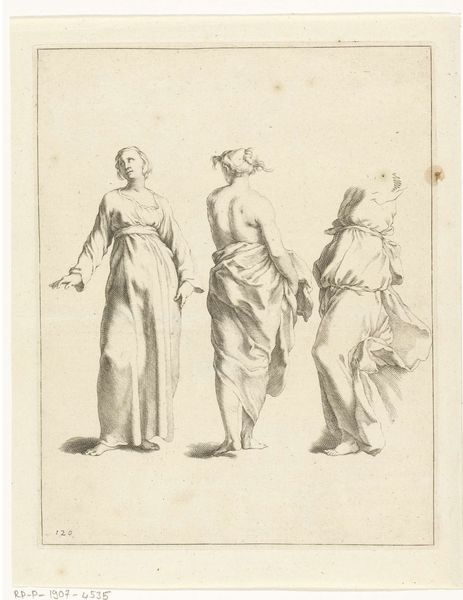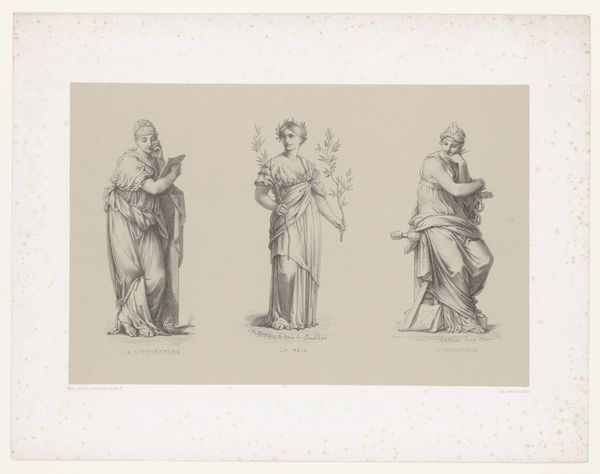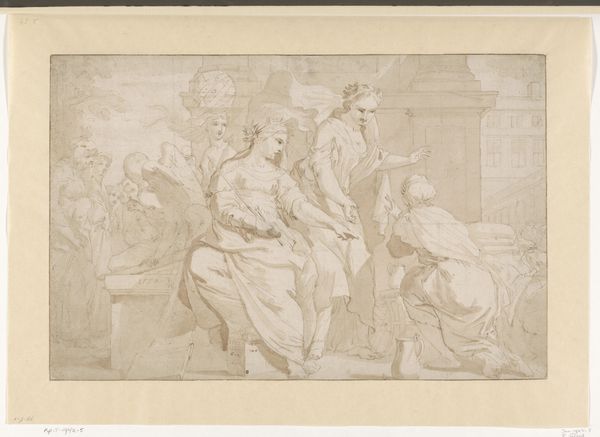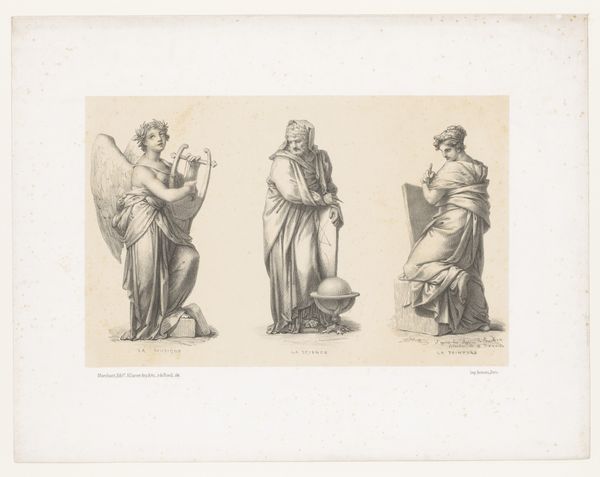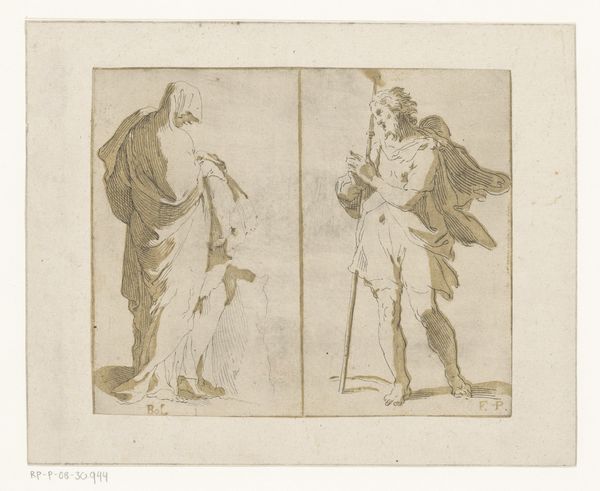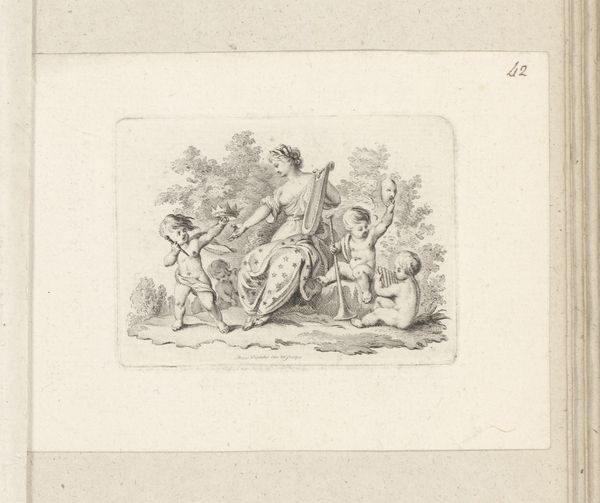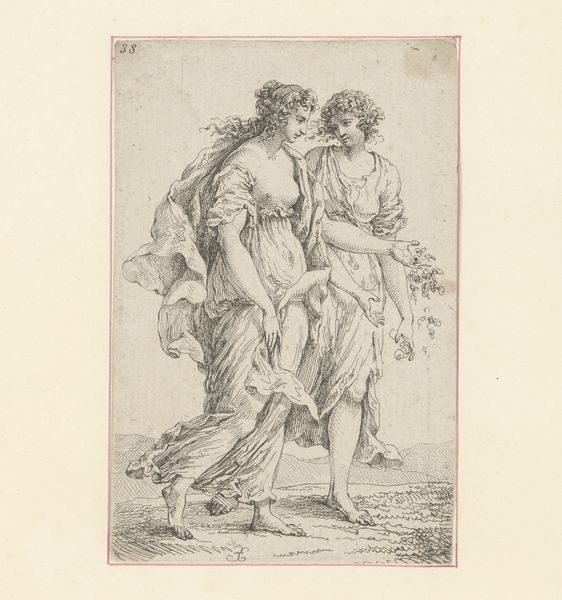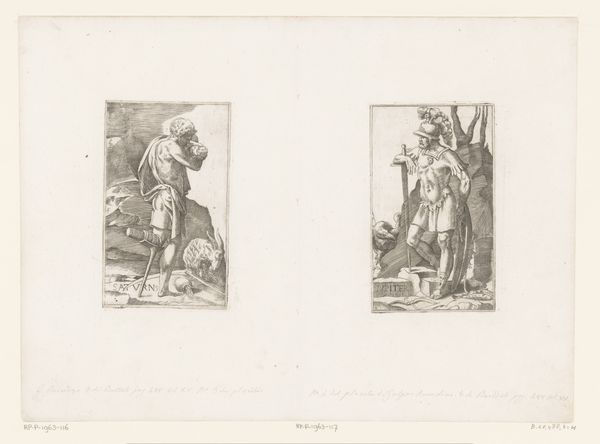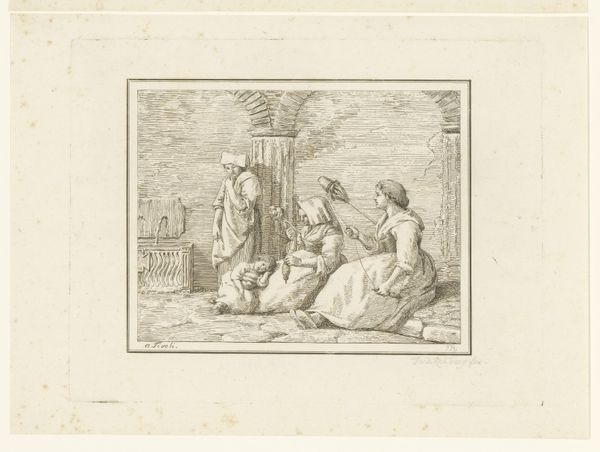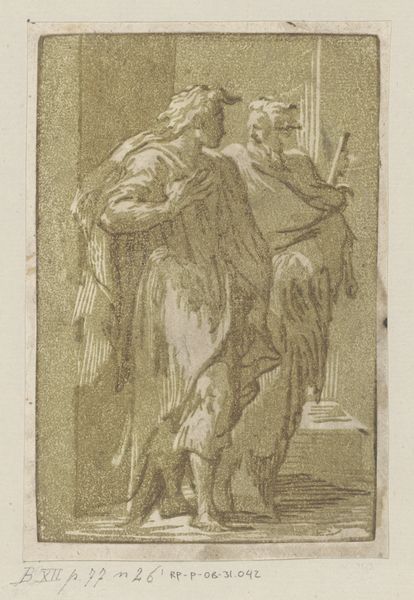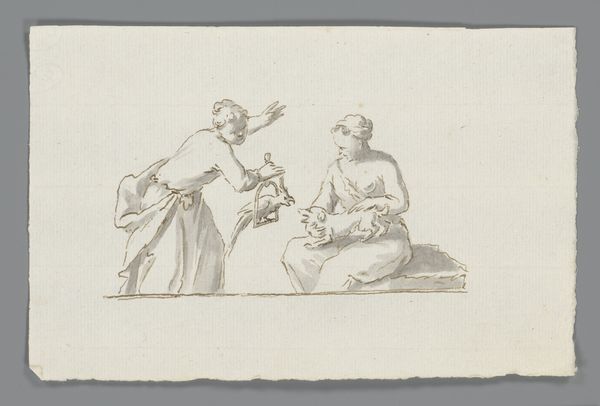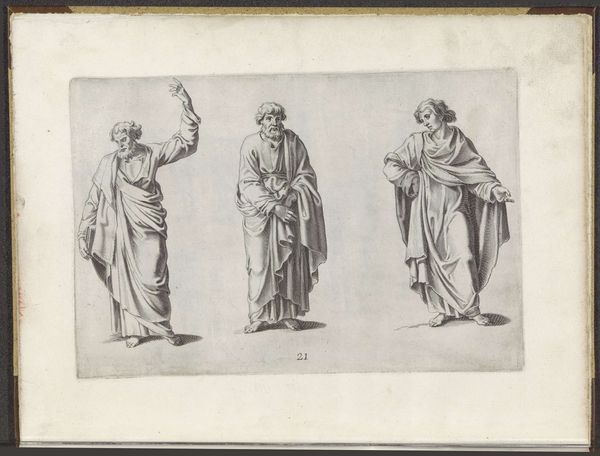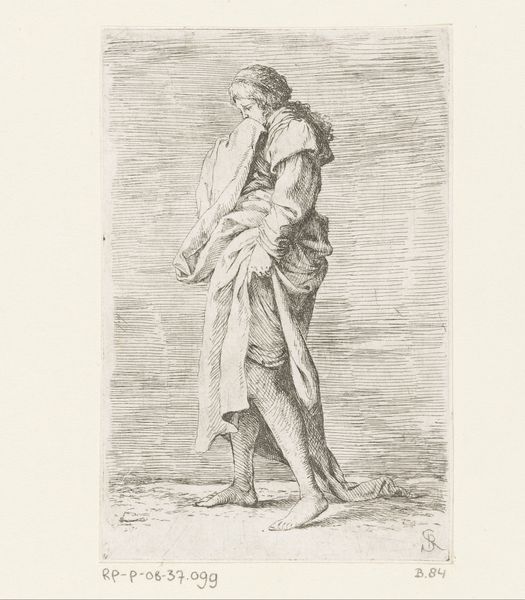
drawing, paper, pencil
#
portrait
#
drawing
#
aged paper
#
toned paper
#
light pencil work
#
pale palette
#
sketch book
#
classical-realism
#
figuration
#
paper
#
personal sketchbook
#
pencil
#
sketchbook drawing
#
watercolour illustration
#
genre-painting
#
storyboard and sketchbook work
#
academic-art
#
sketchbook art
Dimensions: height 156 mm, width 204 mm
Copyright: Rijks Museum: Open Domain
Curator: We're looking at "Twee staande figuren," or "Two Standing Figures," a drawing from somewhere between 1651 and 1761. It resides here at the Rijksmuseum and is attributed to an anonymous artist. Editor: The initial feeling is muted, almost melancholic. The pale palette and aged paper lend a quiet intensity to the scene. It has a provisional character; the artist is still working out their thoughts. Curator: Precisely. Note the subtle tonal gradations achieved solely through pencil work. The composition is carefully balanced; two figures occupying separate but related spaces within the frame. The lines articulate classical draping, revealing a mastery of form. Editor: I find myself drawn to the materiality, especially how the toned paper functions. It provides a pre-existing texture and warmth which radically impacts the pale palette. Did the choice of paper influence the application and technique of the drawing itself, maybe affecting what narratives could even be produced on it? Curator: An astute observation! The choice of paper undeniably influences the final piece, modulating the contrast and imbuing the figures with a certain vulnerability. Look at the way the light catches the folds of their garments—a display of virtuosity, even in its unfinished state. Editor: But look, that incompleteness intrigues me. The sketchbook feel, as if plucked straight from the artist’s studio, offers an insight into their creative process, their working methods, their day to day... and even how their access to certain papers of different sizes may have limited the size and therefore perhaps the subject of their practice. Curator: True, its lack of polish gives it a raw authenticity. I believe its value stems not just from technical skill but its power to elicit emotional and intellectual responses. The figures may be anonymous, but their presence is potent. Editor: Yes, and in seeing its making we see also the economic relationships of making itself, revealing more than a finished history painting might about its era. Curator: Ultimately, this modest drawing offers an entry point into understanding larger questions about artistic creation. Editor: For me, I see the daily concerns of production and distribution rippling through the artwork.
Comments
No comments
Be the first to comment and join the conversation on the ultimate creative platform.
